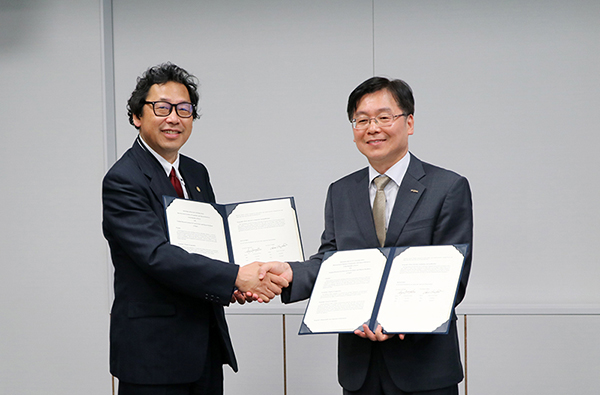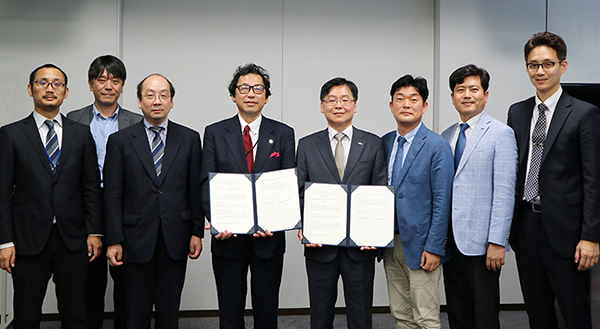- Nameadmin
- Date2017/08/24 00:00
- Hit786

Korea Institute of Geoscience and Mineral Resources (KIGAM) signed Memorandum of Understanding (MOU) with National Research Institute for Earth Science and Disaster Prevention of Japan (NIED) in Tsukuba City, Ibaraki, Japan on August 24, 2017. At the signing ceremony, Dr. Haruo Hayashi, the president of NIED, Dr. Joong-Ho Synn, the president of KIGAM, and Dr. Chang-Guk Sun, the director of Geology Division were attended as the key figures of the two institutions.
The first MOU was signed with KIGAM and NIED in December 2006 for technical cooperation in research on earthquakes. This was for research on earthquakes and natural disaster through sharing the seismological data of six seismic stations operated by both parties.
After the termination of the MOU, in 2016, there were a 5.0 magnitude of earthquake in the nearby the Ulsan City and 5.8 magnitude earthquake in Gyeongju City. Both cities are located in the southeastern part of Korea. Due to the serious of earthquakes in Korea, the fear on the natural disasters in the Korean peninsular has been increased among the public. Naturally, the needs for advanced seismological research equipment and research systems have been increasingly requested.
Therefore, it has led to the resigning the MOU between KIGAM and NIED as the importance of studies on earthquake has been intensified. The fundamental purpose of the resigning the MOU was to further promote mutual cooperative relations for the research on earthquake related natural disasters. For instance, exchanging information on seismological data as well as the developing the application of the technologies of early warning system for the natural disasters are included. Both KIGAM and NIED aim to develop the technologies into the world class research technologies.
Also, both sides will continue to share the seismological data to strengthen cooperative research for analysis and systematical response to earthquakes in the southeastern part of the Korean peninsula, including Gyeongju City. KIGAM is also planing to develop technologies for accurately detecting the seismic activity in the southeastern region and sea area of the Korean Peninsula, through securing the earthquake data in the southwestern part of Japan. And both institutions will try to establish and operate an earthquake early warning system at the level of advanced countries.
"Through the research agreement with NIED, it is possible to enhance and obtain practical technologies for detecting and analysing of earthquakes in Korea," Dr. Synn, the president of KIGAM said. Also he added, "all researchers of KIGAM will do their best to resolve the anxiety over the Korean peninsula and will put top priority on creating a safety environment for the people and for the national security."
